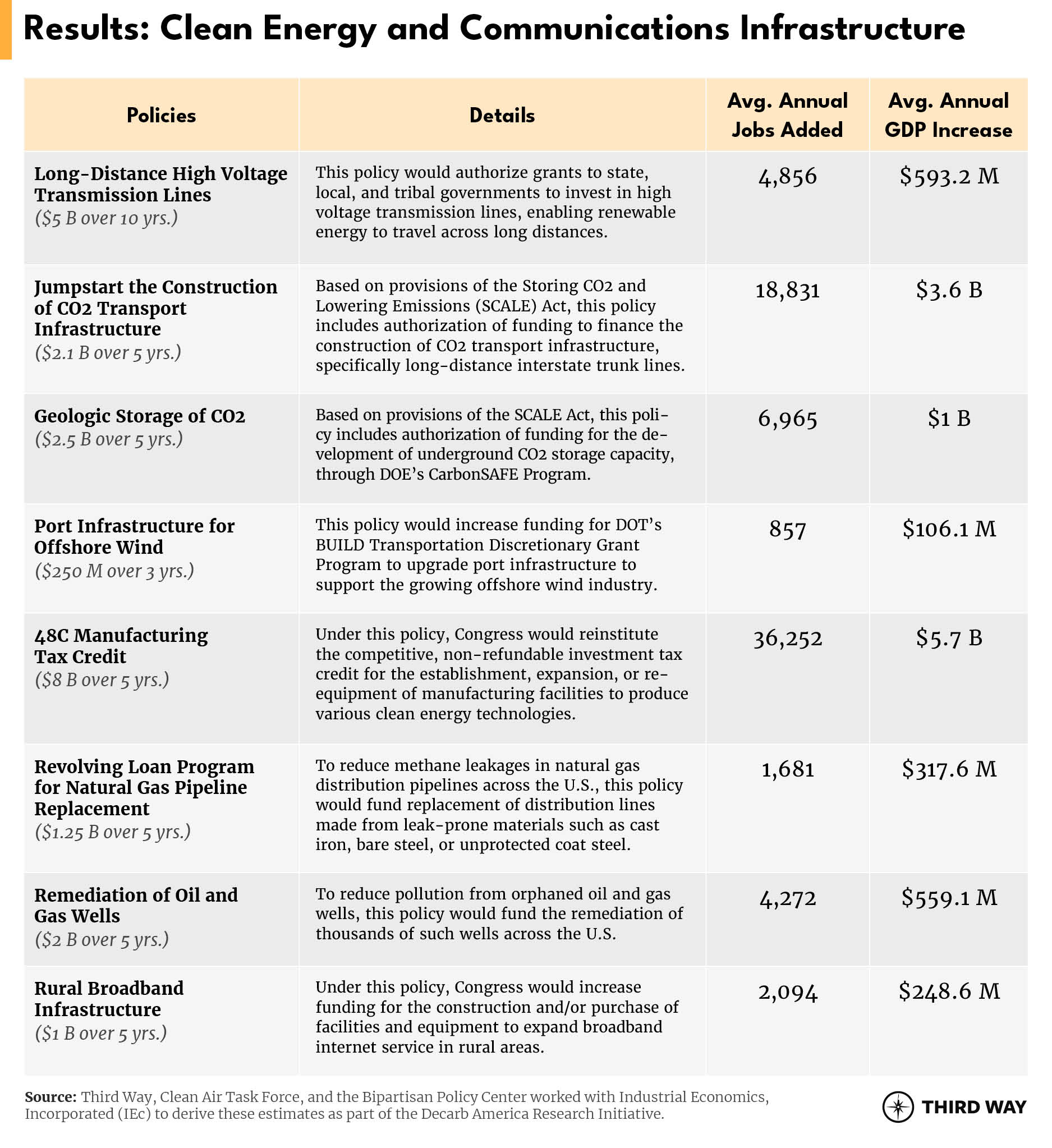How to Create Over 1 Million Jobs While Advancing Climate Goals

$754 billion in public investments for innovation, transportation, and clean energy infrastructure would create over 1 million annual jobs through 2026, according to the latest modeling results from the Decarb America Research Initiative. And the benefits could be distributed all across the country, if the policy is well designed. That projected payoff makes clean energy policy a vital component of an infrastructure package this year.
As policymakers transition from a conversation about relief to one of recovery, Congress is ramping up work with the Biden-Harris Administration to fund infrastructure that will drive long-term economic opportunity and create jobs, especially in communities that were left out of the post-Great Recession recovery and have been impacted by the transition away from fossil fuels. These infrastructure projects can also contribute to President Biden’s ambitious climate plans by building the clean energy technologies and supportive infrastructure needed to reach net-zero emissions. Public investments in clean energy innovation and infrastructure will put Americans to work building a more sustainable economy, and make US companies and workers more competitive in an increasingly global marketplace.

What We Modeled
Third Way, Clean Air Task Force, and Bipartisan Policy Center partnered with Industrial Economics (IEc) to model the economic impact for 20 different clean energy policies that advance the important national goals of putting Americans back to work while reducing emissions and accelerating resiliency to the changing climate. These policies fall under three categories: transportation infrastructure, clean energy and expanded communications infrastructure, and clean energy demonstration projects. For each policy, we determined funding levels and distributions based on published data about the nation’s infrastructure deficiencies, existing policy proposals, and the public investments needed for new, innovative energy technologies.
Our analysis helps inform policymakers on the immediate tangible benefits of clean energy, transportation, and innovation infrastructure - how many jobs and how much economic activity they create. The transition to a zero carbon economy not only benefits the environment, but as our study shows, holds great promise for a broad range of businesses and their workers as well.
How To Read the Results
In this memo, we present nation-wide results for the average annual jobs created and average annual GDP increase for each policy. The full technical report, which includes more detailed employment and economic impacts by year as well as state-level results, can be found here.
The GDP increase is a cumulative increase. So, for example, our policy to fully fund the surface transportation maintenance backlog will increase GDP each year by an average of $120.3 billion, resulting in a $721.8 billion GDP increase over the 6-year life of the policy.
The jobs created number is not cumulative. It is an average increase in the number of jobs per year above what would otherwise exist without the policy. Again using the surface transportation maintenance backlog policy as an example, this policy sustains an average increase of 930,378 jobs in any given year over the six year spending window.
Both the GDP and jobs numbers represent the sum of the direct, indirect, and induced economic and employment effects of these policies. A brief explanation of these terms below:
- Direct – jobs and GDP added within a specific industry given new spending on these projects
- Indirect – jobs and GDP added within the industry supply chain due to increased economic activity
- Induced – jobs and GDP added in the communities in which affected companies operate due to increased economic activity



Conclusion
When you factor in the direct, indirect, and induced benefits of each policy, all policies have clear employment and economic benefits and can advance crucial national climate goals in the process. As the Intergovernmental Panel on Climate Change (IPCC) reports and the Biden Administration advocates, we must reach net zero emissions by 2050 to mitigate the worst effects of climate change. Every piece of legislation considered by Congress from this point forward must contribute to, or at least not work against, that goal.
However, Congress must not lose focus on the immediate needs of its constituents as millions of Americans struggle to find gainful employment amid the health and economic crises of the past year. It must provide the resources to rebuild our deficient, outdated public infrastructure as well as our capable and willing workforce. Our modeling proves these goals are not mutually exclusive. By investing in a more resilient, modern infrastructure and innovative zero carbon technologies, the government can simultaneously put people to work, stimulate the economy, and accelerate our transition to the new carbon-constrained economy.
Subscribe
Get updates whenever new content is added. We'll never share your email with anyone.


